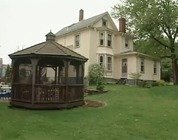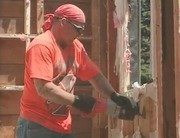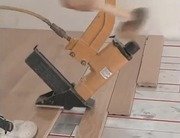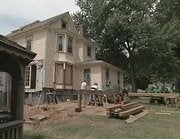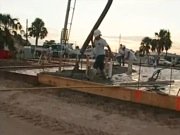Building a Reinforced, Solid-Pour Concrete Wall
Bob is joined by Jim Crain who will take him through the process of pouring cement walls. Mark Newton joins Bob as the pour begins.
Clip Summary
Bob is joined on the site of the Punta Gorda, Floridaa, storm-ready home by Jim Crain of Precise Forms. Precise Forms partners with Mercedes Builders to create high quality, reinforced concrete homes throughout Florida.Precise Forms began in 1967 by supplying cast-in-place forms for subterranean foundations and basements. In 2000, they began to set forms for full wall, cast-in-place houses for Mercedes Homes.
Once the forms are set, Bob walks through the layout with Jesse Gonzalez of Mercedes Homes. Gonzalez points to window placements that are encapsulated behind the aluminum forms as they walk past view windows in the family area, past the three bedrooms, bath, laundry, and two-car garage of this four-bedroom home with master suite.
Mark Newton of Solid Wall Systems joins Bob as the pour begins. He explains that they are using a 2,000-pound psi, small aggregate concrete mix for the entire pour. We watch as the concrete is pumped into the forms, which are braced at the top by two-by-fours that hold the tops of the forms square to prevent movement as the forms receive the static pressure of the concrete.
Newton explains that they will vibrate around all door and window openings before allowing the concrete to set. This will help eliminate voids, honeycombing, or any blowout due to bad adhesion or conformity of the concrete.
